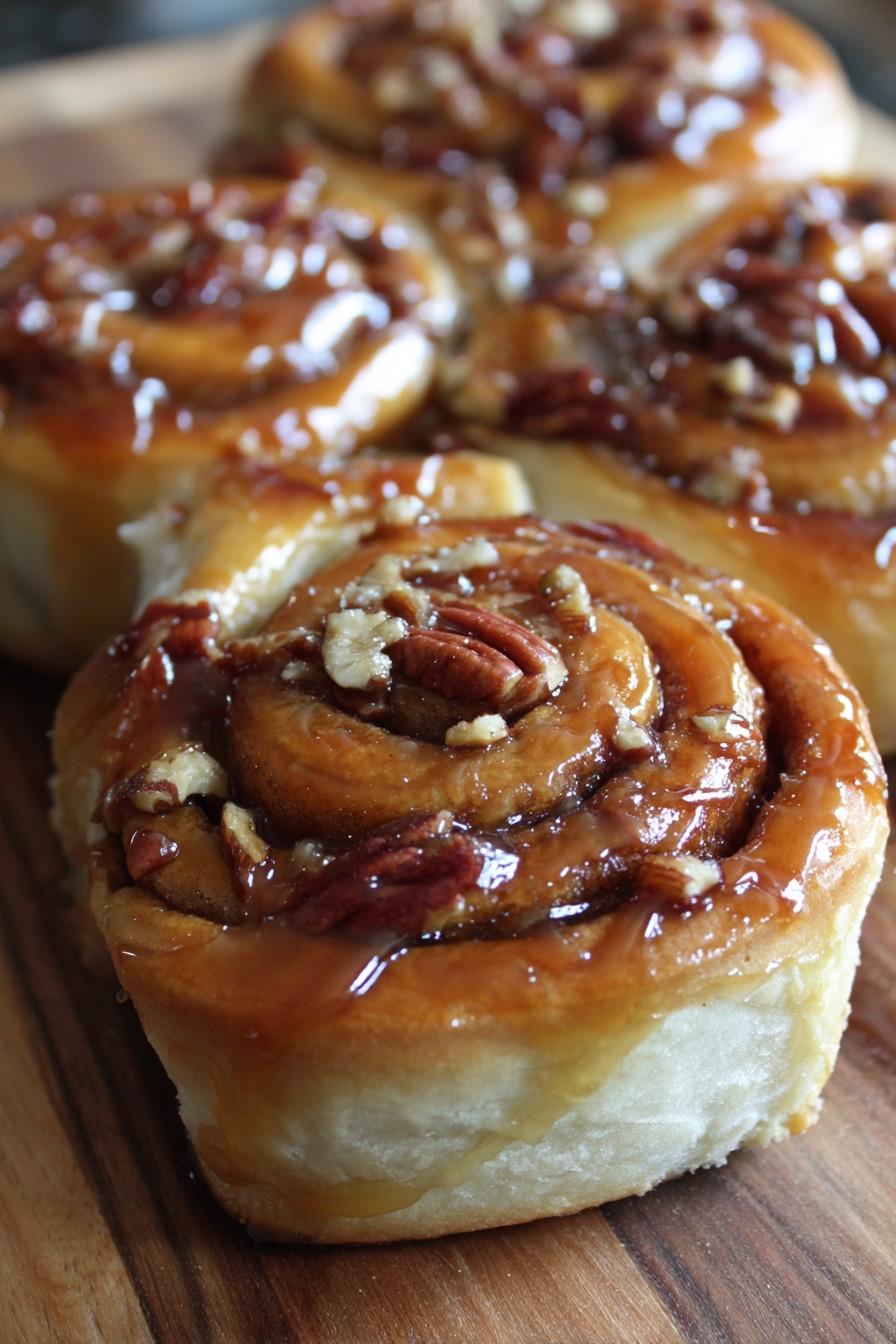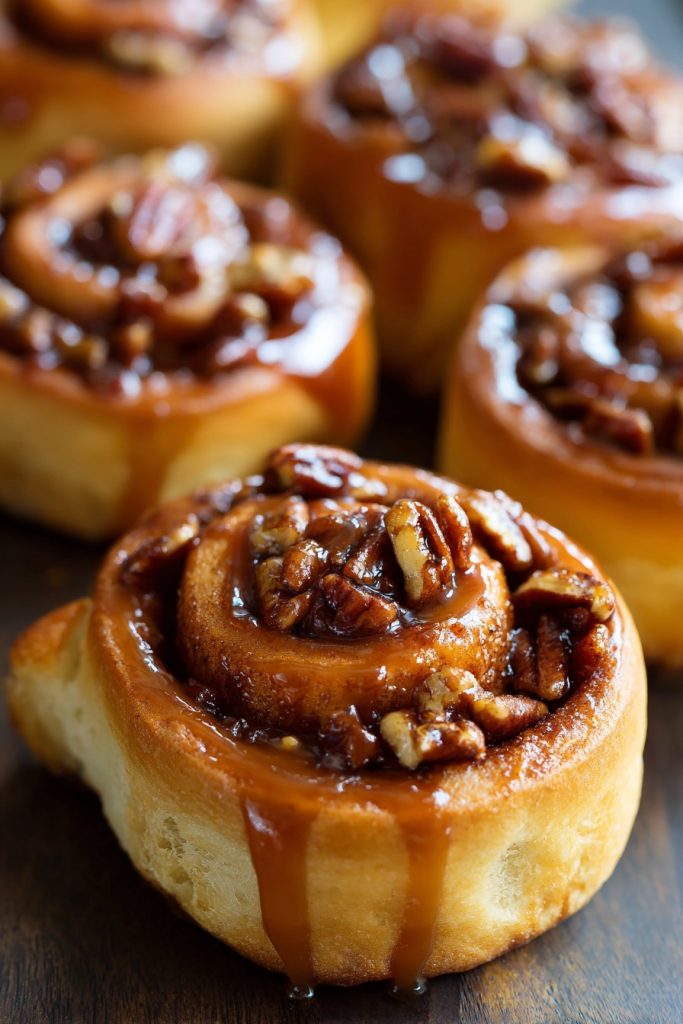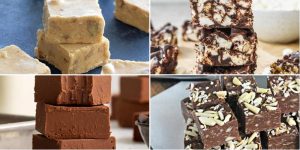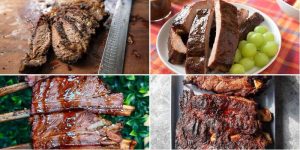Warmth begins not with sunlight, but with the gentle promise of cinnamon and butter dancing through your kitchen. When you craft these caramel pecan cinnamon rolls, you’re weaving more than flour and sugar—you’re creating a tender moment that lingers long after the last crumb disappears. There’s something profoundly intimate about sharing something so lovingly made, where every swirl tells a story of patience and care.
Why This Recipe Works
- The dough rises twice for an exceptionally soft, pillowy texture that melts in your mouth, creating layers that separate with buttery tenderness
- Toasting the pecans before incorporating them releases their natural oils, deepening their nutty flavor and adding a delightful crunch that contrasts beautifully with the soft dough
- Homemade caramel sauce, cooked to precisely 240°F, achieves the perfect balance between sweet and slightly bitter notes that store-bought versions simply cannot replicate
- Rolling the dough tightly and using dental floss for cutting ensures clean, beautiful spirals that hold their shape during baking and create that signature pull-apart texture
- The final broil for exactly 90 seconds gives the caramel topping that irresistible glossy finish and subtle crunch that makes these rolls truly unforgettable
Ingredients
- 4 cups all-purpose flour, plus extra for dusting
- 1 cup whole milk, warmed to 110°F
- ½ cup granulated sugar
- ½ cup unsalted butter, softened at room temperature
- 2 large eggs, brought to room temperature
- 2¼ teaspoons active dry yeast (one standard packet)
- 1 teaspoon fine sea salt
- 1 cup dark brown sugar, packed
- 2 tablespoons ground cinnamon
- 1 cup chopped pecans, toasted until fragrant
- 1 cup heavy cream, divided
- 1 cup light corn syrup
- ½ teaspoon pure vanilla extract
- ¼ teaspoon flaky sea salt for finishing
Equipment Needed
- Stand mixer with dough hook attachment
- Large mixing bowl
- Rolling pin
- 9×13 inch baking dish
- Candy thermometer
- Medium saucepan
- Pastry brush
- Kitchen scale (optional but recommended)
- Unflavored dental floss for cutting
Instructions

Creating the Foundation: The Perfect Dough
Begin by warming your whole milk to exactly 110°F in a small saucepan—this temperature is crucial as it activates the yeast without killing it. In your stand mixer bowl, combine the warmed milk with the active dry yeast and a tablespoon of the granulated sugar, then let this mixture sit for about five minutes until it becomes foamy and fragrant. This blooming process ensures your yeast is alive and ready to work its magic. Add the remaining sugar, softened butter, eggs, and sea salt, then gradually incorporate the four cups of all-purpose flour while mixing on low speed. Once the dough begins to come together, increase to medium speed and knead for six to eight minutes until the dough becomes smooth, elastic, and pulls away cleanly from the sides of the bowl. The dough should feel soft and slightly tacky but not sticky—if it sticks to your fingers, add another tablespoon of flour. Transfer this beautiful, supple dough to a lightly oiled bowl, turning it once to coat, then cover with a clean kitchen towel and let it rise in a warm, draft-free place for one to two hours until doubled in size.
Crafting the Heart: The Filling and Caramel
While your dough rises, prepare the elements that will make these rolls extraordinary. For the cinnamon filling, combine the packed dark brown sugar with the two tablespoons of ground cinnamon in a small bowl, mixing thoroughly until no streaks remain. The deep, warm aroma that rises from this mixture will fill your kitchen with anticipation. For the caramel, combine three-quarters cup of the heavy cream with the light corn syrup and remaining brown sugar in a medium saucepan. Cook over medium heat, stirring constantly with a wooden spoon until the sugar dissolves completely, then attach your candy thermometer and continue cooking without stirring until the mixture reaches precisely 240°F. This temperature creates a caramel that will set beautifully without becoming hard or brittle. Remove from heat and stir in the remaining quarter cup of cold heavy cream and the pure vanilla extract—be careful as the mixture will bubble vigorously. Pour half of this glorious caramel into your prepared 9×13 inch baking dish, spreading it evenly across the bottom, then sprinkle the toasted pecans over the caramel, creating a nutty foundation for your rolls.
Shaping with Love: The Rolling and Cutting
When your dough has doubled in size, gently punch it down to release the air bubbles, then turn it out onto a lightly floured surface. Using your rolling pin, roll the dough into a 16×12 inch rectangle, ensuring the thickness is even throughout. Spread the softened butter evenly over the entire surface, leaving only a half-inch border along one long edge. Sprinkle the cinnamon-sugar mixture over the buttered dough, pressing it gently into the surface with your hands to help it adhere. Starting from the long edge opposite the bare border, carefully but firmly roll the dough into a tight log, pinching the seam to seal. For perfectly cut rolls that maintain their shape, use unflavored dental floss—slide it under the roll, cross the ends over the top, and pull gently to create clean cuts without squashing the beautiful spirals. You should get twelve equal portions, each about one and a half inches thick.
The Final Rise and Baking Transformation
Arrange your cut rolls cut-side up in the caramel-lined baking dish, spacing them evenly with room to expand. Cover the dish loosely with plastic wrap or a clean kitchen towel and let them rise in a warm place for thirty to forty-five minutes until puffy and nearly doubled. During this final rise, preheat your oven to 350°F, ensuring it reaches temperature before your rolls are ready. When the rolls look soft and pillowy, place them in the center rack of your oven and bake for twenty-five to thirty minutes until the tops are golden brown and the caramel bubbles around the edges. The internal temperature should reach 190°F when tested with an instant-read thermometer. The aroma filling your kitchen will be absolutely intoxicating—a warm embrace of cinnamon, butter, and caramel that promises pure comfort.
The Glorious Finish: Cooling and Serving
Remove your beautiful cinnamon rolls from the oven and immediately pour the remaining caramel sauce over the top, using a pastry brush to spread it evenly. Let the rolls cool in the pan for exactly fifteen minutes—this allows the caramel to set slightly while still being wonderfully gooey. After this resting period, carefully run a knife around the edges to loosen any stuck caramel, then place a serving platter upside down over the baking dish and, using oven mitts, confidently flip the entire assembly over. Lift the baking dish away to reveal the gorgeous caramel-pecan topping now crowning your rolls. Sprinkle with flaky sea salt to balance the sweetness and enhance all the flavors. Serve warm, watching as your loved one’s eyes light up with that first heavenly bite—the perfect beginning to any morning shared together.
Tips and Tricks
For the most tender cinnamon rolls imaginable, consider using bread flour instead of all-purpose—the higher protein content creates stronger gluten networks that trap more air during rising, resulting in an exceptionally light and airy texture. If you find yourself without a stand mixer, you can absolutely knead the dough by hand on a lightly floured surface for ten to twelve minutes until it becomes smooth and elastic—the rhythmic motion can be quite meditative and connects you more intimately with the baking process. When toasting your pecans, spread them in a single layer on a baking sheet and toast at 350°F for six to eight minutes, shaking the pan halfway through, until they become fragrant and slightly darkened—this simple step intensifies their flavor dramatically. For overnight preparation, complete the recipe through the cutting stage, then arrange the rolls in your baking dish, cover tightly with plastic wrap, and refrigerate overnight; the next morning, let them sit at room temperature for thirty minutes before baking as directed—the slow, cold rise develops even more complex flavors. If your caramel sauce becomes too thick upon standing, gently rewarm it over low heat or in short bursts in the microwave, stirring between intervals until it returns to pouring consistency. For perfectly even baking, rotate your pan halfway through the baking time to account for any hot spots in your oven, and always use an oven thermometer to verify your oven’s accuracy—temperature precision makes all the difference in baking. When storing leftovers, place them in an airtight container at room temperature for up to two days, or freeze individually wrapped rolls for up to three months; to reheat, warm in a 300°F oven for ten minutes or microwave briefly until just warmed through.
Recipe Variations
- For a sophisticated twist, replace the cinnamon with cardamom and add finely chopped dried apricots to the filling—the floral notes of cardamom pair beautifully with the sweet-tart apricots and create an exotic flavor profile that feels both comforting and adventurous. The apricots add delightful chewy texture pockets throughout the rolls.
- Create a chocolate-hazelnut version by substituting the cinnamon filling with a mixture of Nutella and chopped toasted hazelnuts, then drizzle with a chocolate ganache instead of caramel—this decadent variation transforms your morning treat into an elegant dessert worthy of any special occasion or romantic breakfast in bed.
- For a seasonal autumn variation, incorporate pumpkin puree into the dough and add a teaspoon of pumpkin pie spice to the filling—the pumpkin adds incredible moisture and a subtle earthiness that complements the caramel and pecans perfectly, making these rolls the ultimate fall comfort food.
- Transform these into orange-cranberry rolls by adding the zest of one orange to the dough and filling, then scattering dried cranberries over the cinnamon-sugar mixture—the bright citrus notes cut through the richness while the tart cranberries provide bursts of flavor that elevate the entire experience.
- For a savory-sweet option that’s perfect for brunch, crumble cooked bacon over the cinnamon filling before rolling—the salty, smoky bacon creates an irresistible contrast with the sweet caramel and adds a satisfying crunch that will have everyone asking for your secret.
Frequently Asked Questions
Can I make these cinnamon rolls ahead of time?
Absolutely, and doing so actually enhances their flavor. You can prepare the rolls through the cutting stage, then arrange them in your baking dish, cover tightly with plastic wrap, and refrigerate for up to twenty-four hours. The cold environment slows the yeast activity, allowing for a slow, flavor-developing rise. When ready to bake, remove from the refrigerator and let sit at room temperature for thirty to forty-five minutes while your oven preheats, then bake as directed. The extended rising time in the refrigerator allows the flavors to meld and deepen, resulting in an even more complex and delicious final product that’s well worth the planning.
Why did my caramel sauce become grainy?
Grainy caramel typically occurs when sugar crystals form during the cooking process, often due to stirring after the sugar has dissolved or crystals forming on the sides of the pan. To prevent this, ensure your saucepan is completely clean before beginning, and once the sugar has dissolved, avoid stirring the mixture. Instead, gently swirl the pan occasionally to ensure even heating. If you notice sugar crystals forming on the sides of the pan, use a wet pastry brush to wash them down into the mixture. If your caramel does become grainy, you can often salvage it by adding a tablespoon of hot water and continuing to cook while stirring constantly until the crystals dissolve back into the syrup.
Can I freeze these cinnamon rolls after baking?
Yes, these cinnamon rolls freeze beautifully for up to three months. Allow them to cool completely after baking, then wrap individually in plastic wrap followed by aluminum foil to prevent freezer burn. For best results, freeze the rolls without the final caramel topping and make fresh caramel when ready to serve. To reheat, remove the wrapping and place frozen rolls on a baking sheet in a 300°F oven for fifteen to twenty minutes until warmed through. Alternatively, you can microwave individual frozen rolls for thirty to forty-five seconds, though the oven method will restore that freshly-baked texture more effectively. The caramel sauce can be made ahead and refrigerated separately, then gently reheated when serving.
What if my dough isn’t rising properly?
If your dough isn’t rising, the most common culprit is expired yeast or liquid that was too hot, which can kill the yeast. Always check your yeast’s expiration date and test it by blooming in warm liquid with a pinch of sugar—it should become foamy within five to ten minutes. The ideal temperature for activating yeast is between 105°F and 115°F—any hotter can destroy it, while cooler temperatures will slow activation significantly. If your kitchen is cool, create a warm rising environment by placing the dough in an oven with the light on or near a warm appliance. Sometimes dough simply needs more time, so be patient—the wait is always worth it for that perfect, pillowy texture.
Summary
These caramel pecan cinnamon rolls create moments of pure connection through their tender layers, warm spices, and luxurious caramel embrace. The careful preparation becomes an act of love that transforms simple ingredients into morning magic worth savoring together.
Caramel Pecan Cinnamon Rolls
5
servings30
minutes30
minutesIngredients
Instructions
- 1 Bloom yeast in warm milk with sugar, then mix with remaining ingredients to form dough. Knead until smooth, then let rise until doubled.
- 2 Prepare cinnamon filling and caramel sauce while dough rises. Pour half the caramel into baking dish and sprinkle with pecans.
- 3 Roll dough into rectangle, spread with butter and cinnamon filling, then roll tightly and cut into twelve equal portions.
- 4 Arrange rolls in prepared dish, let rise until puffy, then bake at 350°F for 25-30 minutes until golden brown.
- 5 Pour remaining caramel over hot rolls, cool for 15 minutes, then invert onto serving platter and sprinkle with flaky salt.



